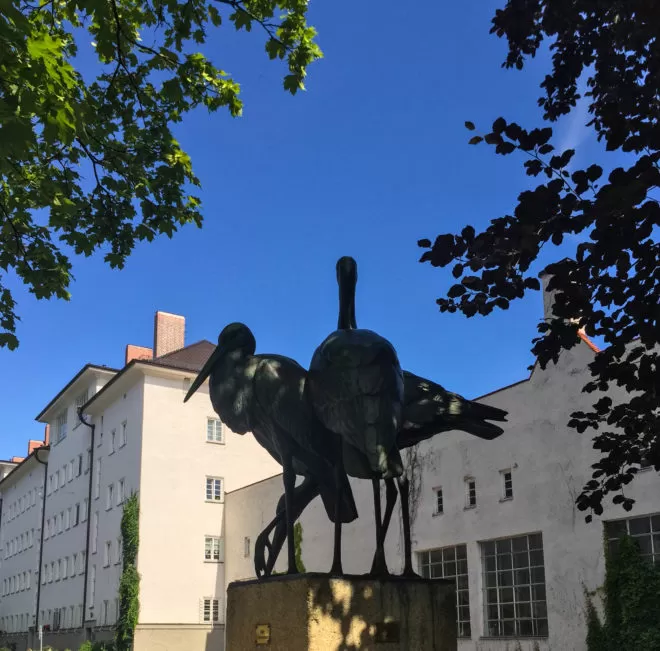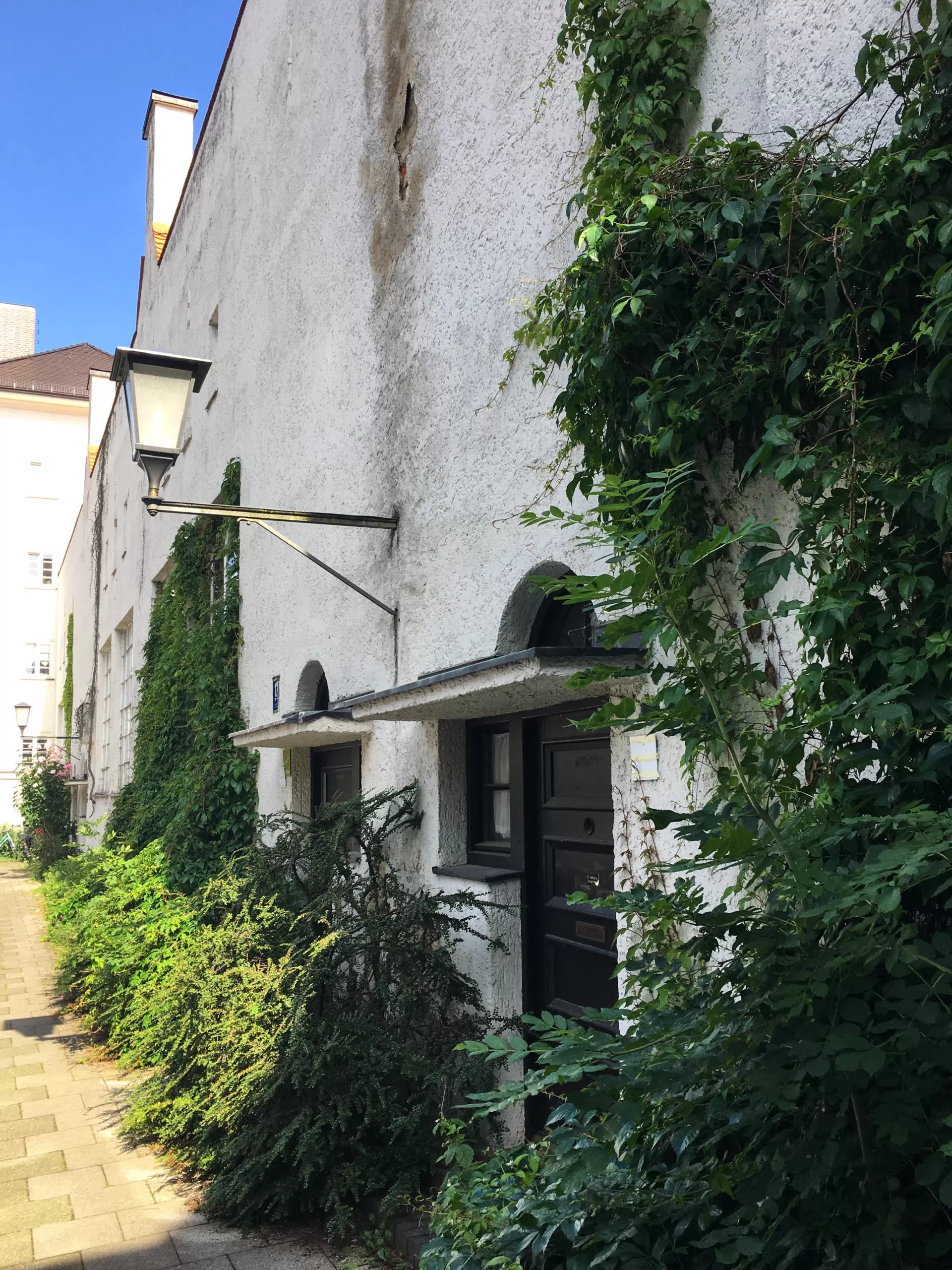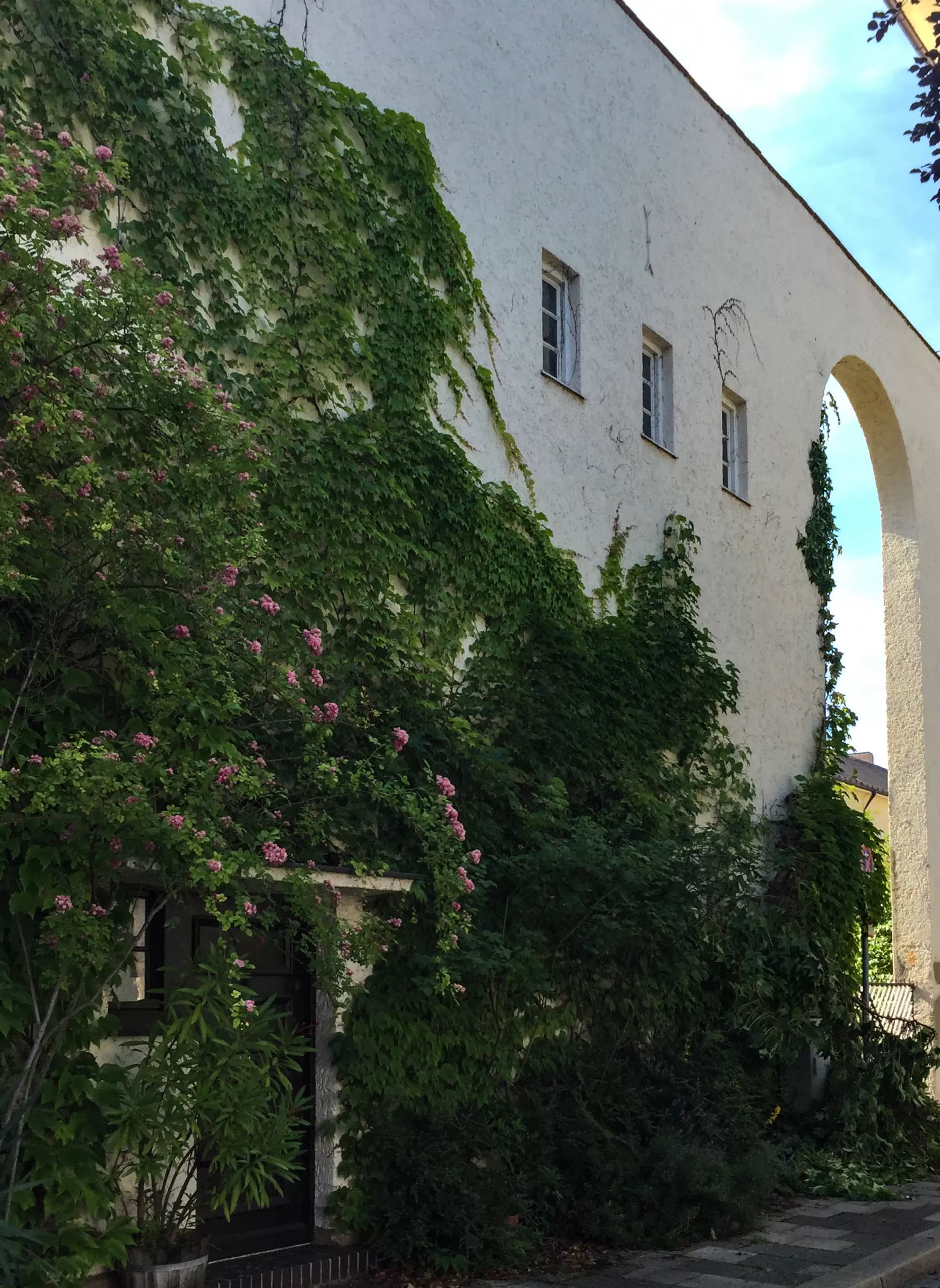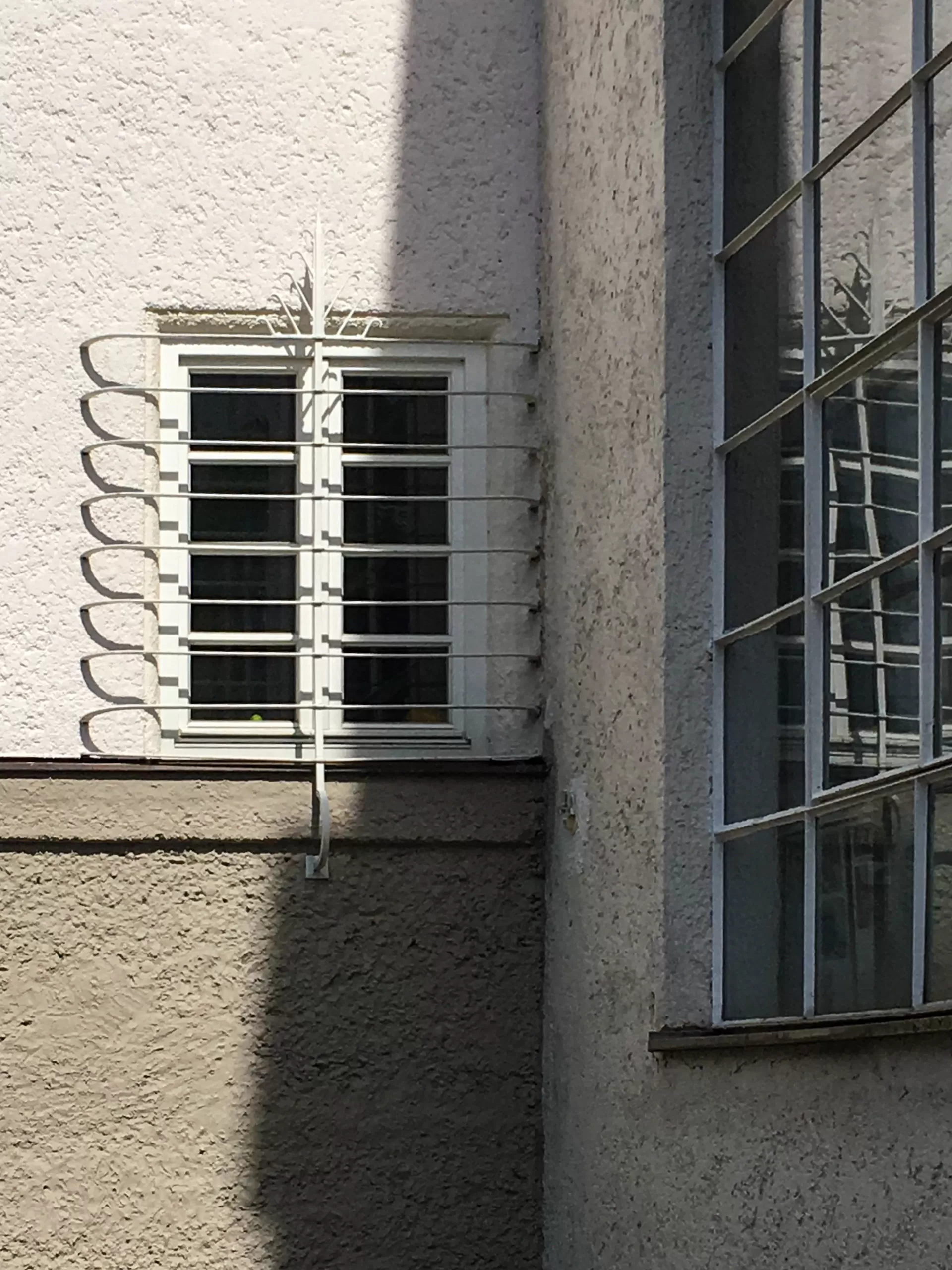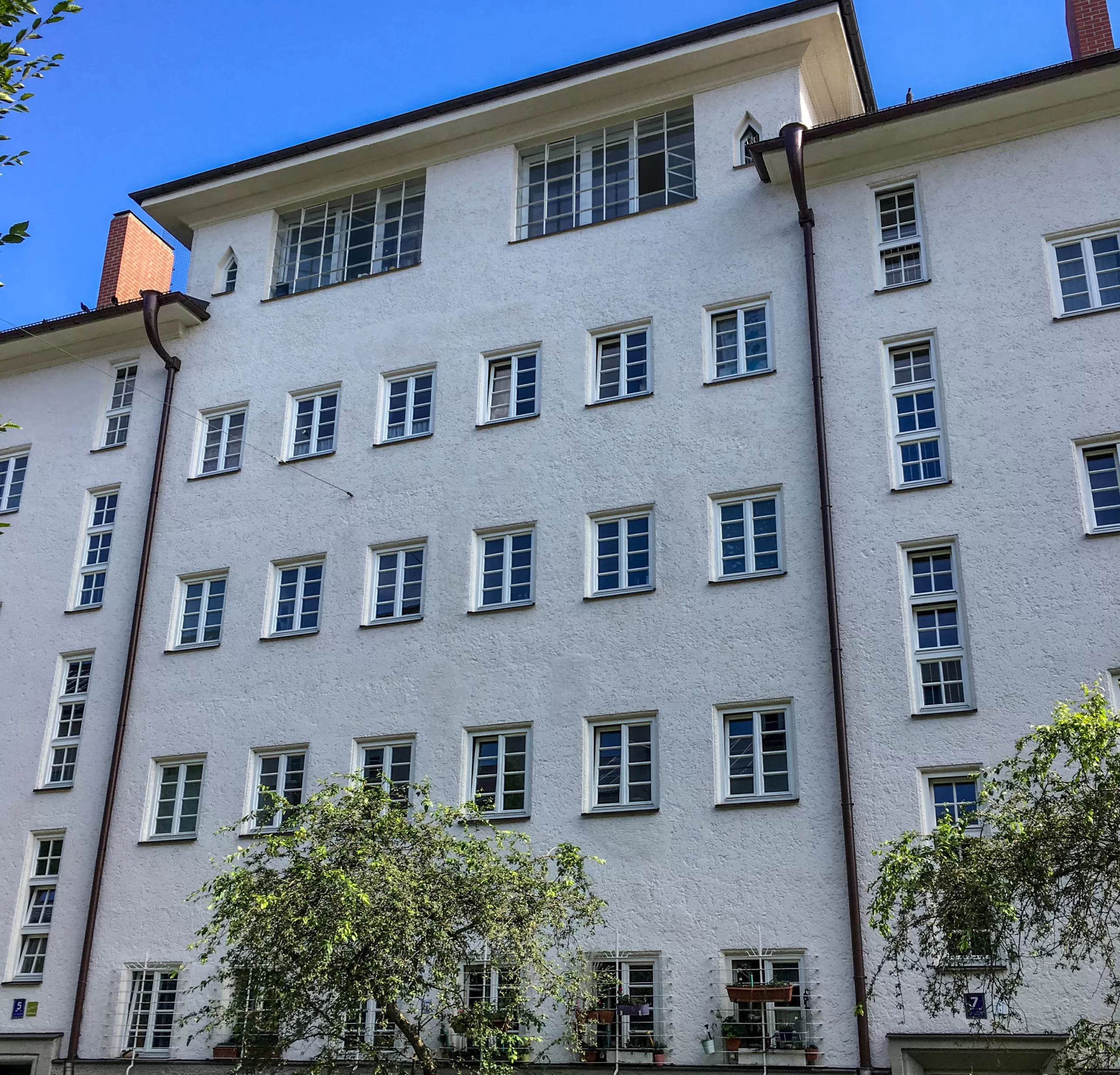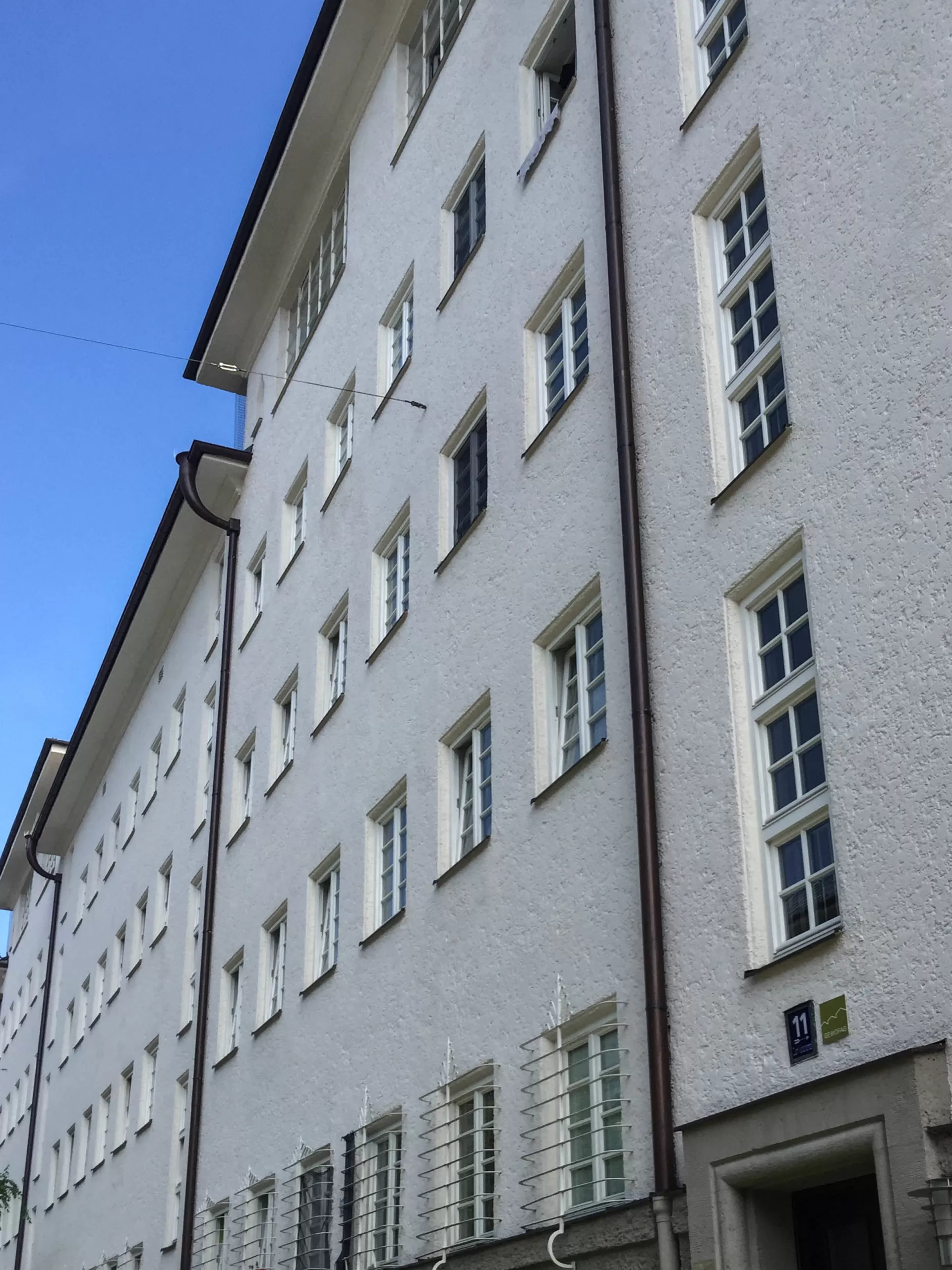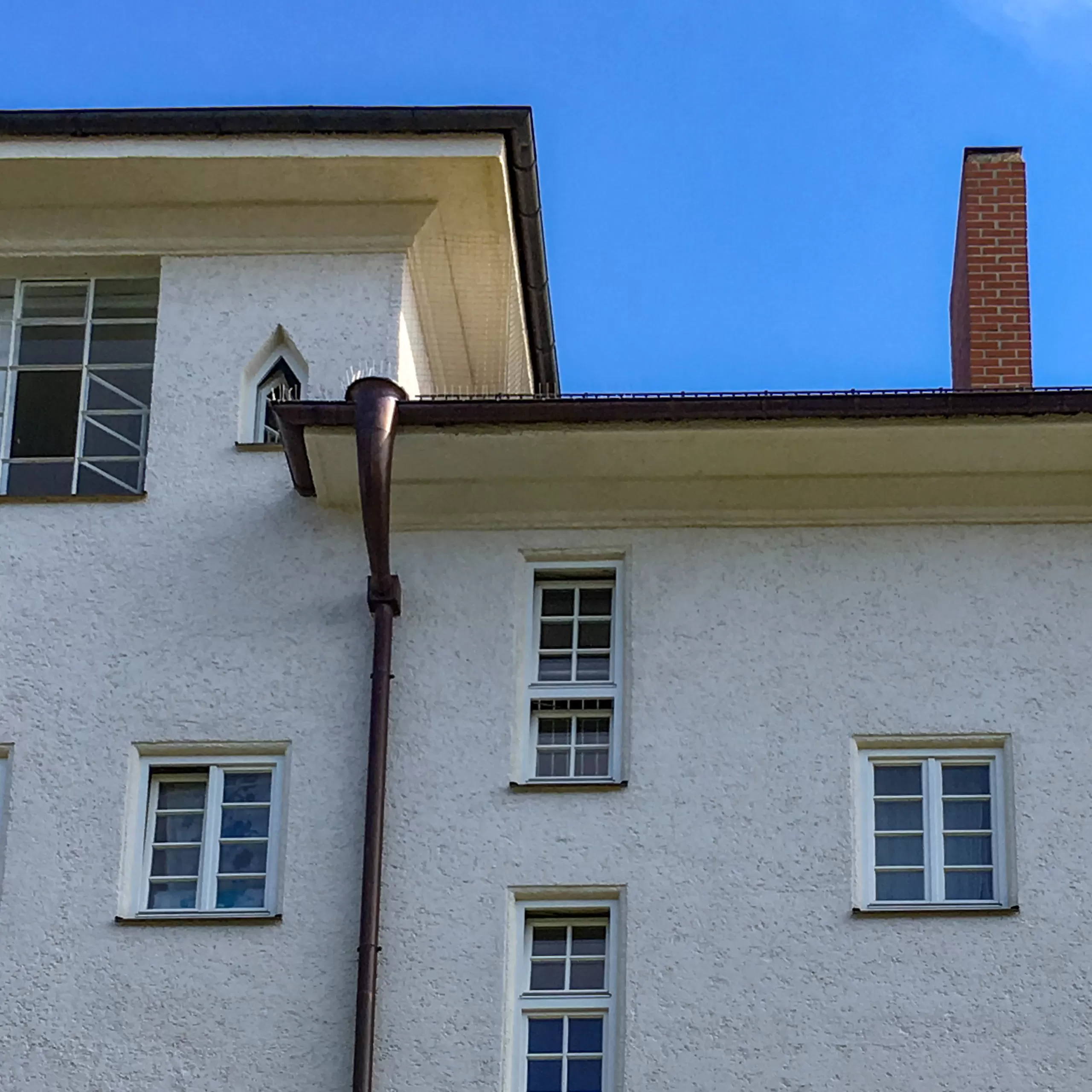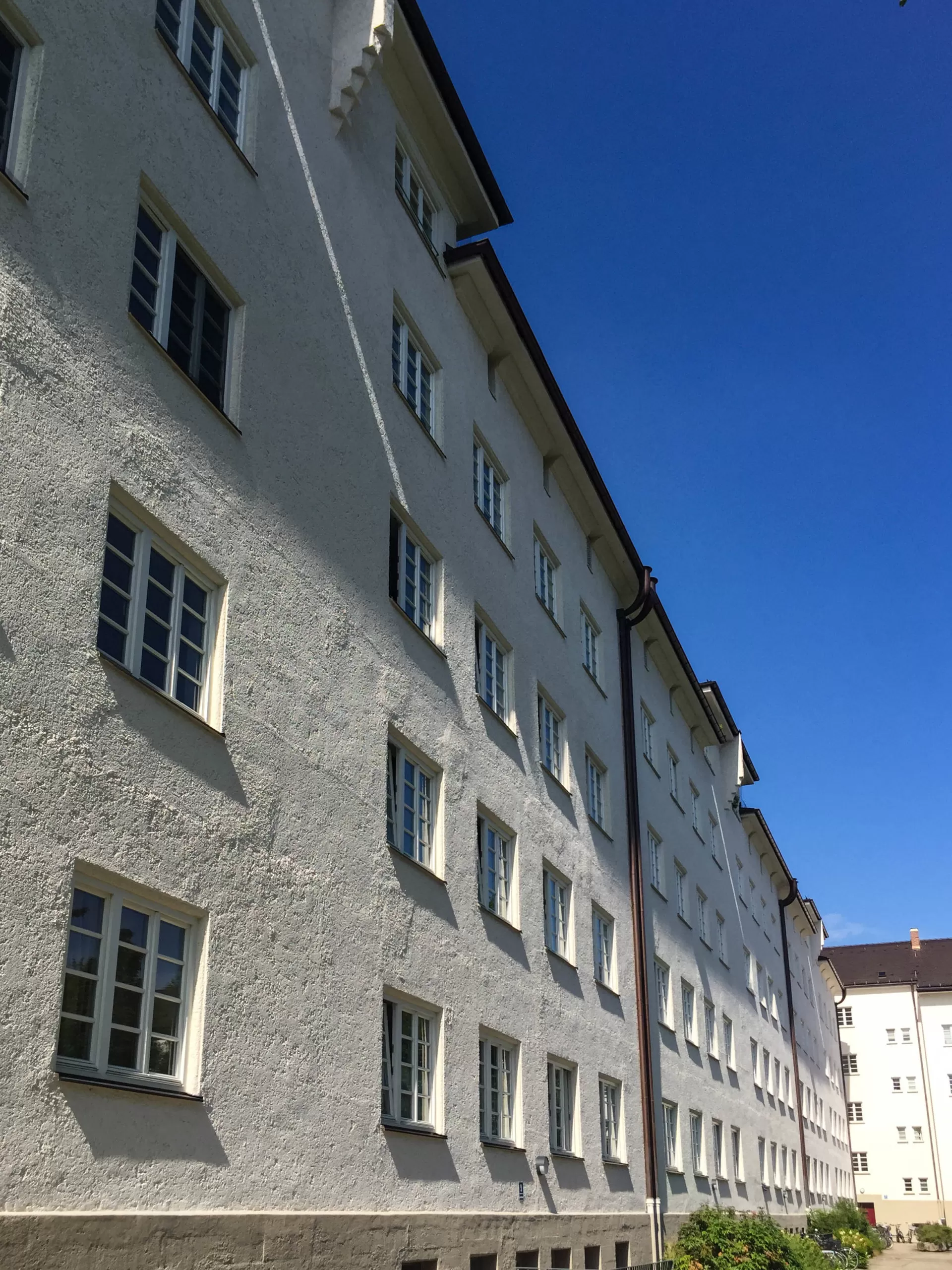1930
Architect: Uli Seeck
Fountain: Emil Manz
Zum Künstlerhof 13-25, Munich
Künstlerhof
Uli Seeck planned the seven sculptor studios from 1929 to 1930 in the Neuhausen estate on a site that could not be built on higher due to the plot layout and the applicable building regulations.
Each studio consists of a two-story workroom with 45 square meters of floor space, an adjoining room, a storage room, WC, and a storage room for materials in the attic.
In the neighboring apartment blocks Zum Künstlerhof 1-11 and Schluderstraße 41-47 there are an additional thirteen studio apartments in the attics.
Studios
Today, thirty artists have their studios in the Künstlerhof.
Two four-story, elongated apartment blocks border the narrow access road, at the end of which the studios form a concluding square.
The studios with large windows, dark wooden doors and sculptural-looking fireplaces have high double doors at the back.
In the square in front of the entrances to the studios is a fountain with a group of storks by the sculptor Emil Manz from 1929.
Neuhausen Housing Estate
The complex is part of the large Neuhausen housing estate built from 1928 to 1930.
The construction of the housing estate was entrusted to a specially founded stock corporation, Gemeinnützige Wohnungsfürsorge AG (GEWOFAG), which has since become a municipal company.
On the outskirts of Neuhausen, where the city of Munich still had meadows and farmland in the 1920s, a total of 1,600 apartments, several stores, small craft businesses, four restaurants and two kindergartens were built on almost 190,000 square meters.
Hans Döllgast
Architect Hans Döllgast was responsible for the overall Neuhausen housing estate project.
Döllgast grew up in Bergheim as well as in the Upper Old Town of Neuburg on the Danube.
He studied architecture at the Technical University of Munich from 1910 to 1914. In 1912/13 he was an assistant to Michael Kurz.
From 1919 to 1922 he worked in the studio of Richard Riemerschmid, then from 1922 to 1926 in the studio and master class of Peter Behrens in Vienna, Berlin and Frankfurt am Main.
Between 1927 and 1929 he worked as an independent architect in Munich, Vienna and Augsburg.
Buildings Hans Döllgast
In 1929 he received his first lectureship in interior design at the Technical University of Munich. In 1939 he received an associate professorship and in 1943 was appointed full professor at the Technical University of Munich.
Döllgast already made a name for himself in Munich before the Second World War with several new church buildings (e.g. the parish church of Heilig Blut in Munich-Bogenhausen) as well as the planning of the Neuhausen housing estate 1928-1931.
After the war, he influenced generations of architects through his work as professor of architectural drawing and spatial art at the Technical University Munich.
Critical Reconstruction
One of the first major model projects of the so-called Critical Reconstruction was the Alte Pinakothek, which had been severely damaged by a bombing during World War II.
There he succeeded in an abstracted reconstruction, in which he closed off the outer walls with unplastered rubble bricks in such a way that the bomb damage remained recognizable as a violation of the original Klenze building.
The building structure was preserved by slender steel columns, concrete lintels and cornices. The newly created, spacious staircase is one of the most beautiful staircases in Germany.

